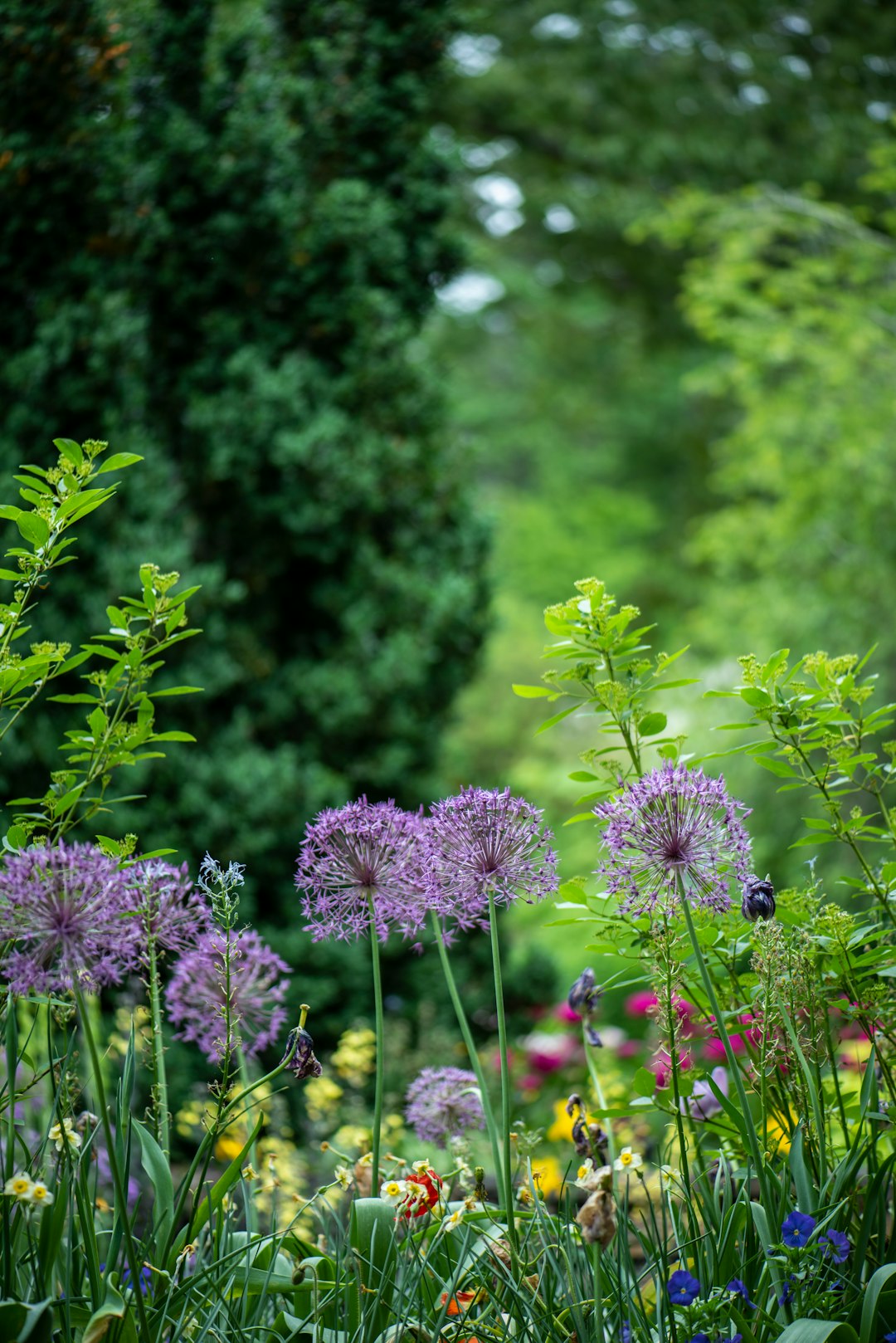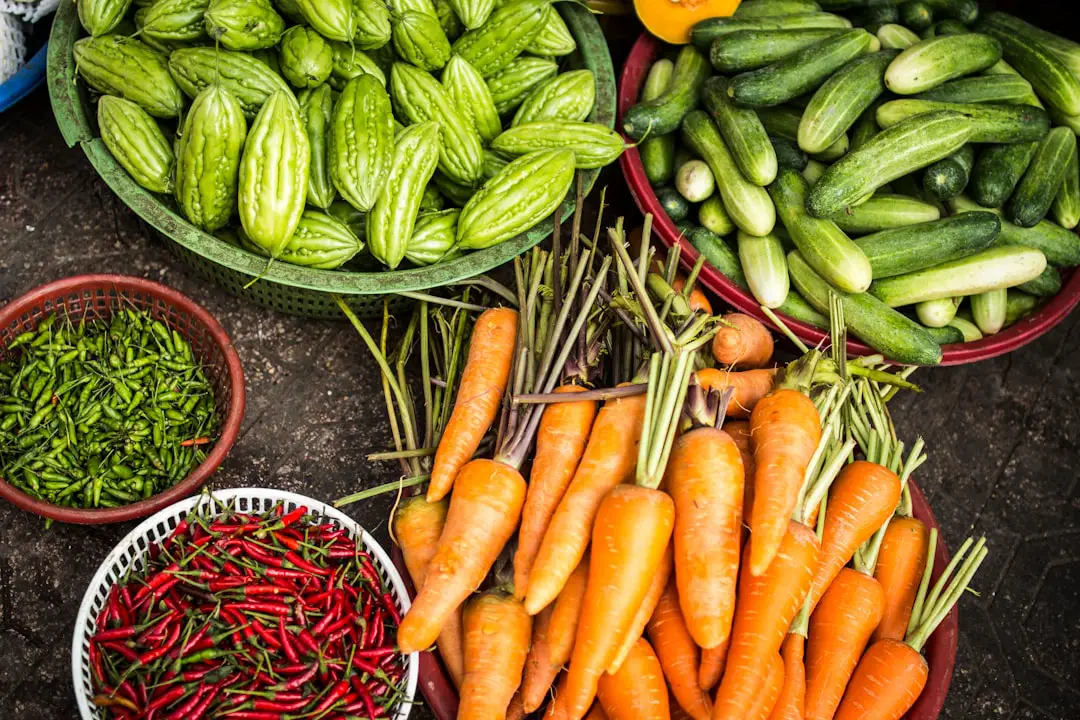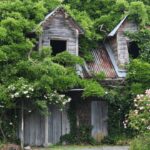Support our educational content for free when you purchase through links on our site. Learn more

Quick Answer: Gardens play a crucial role in helping the environment by promoting biodiversity, conserving water, reducing pollution, mitigating climate change, and providing habitats for wildlife. By incorporating native plants, avoiding pesticides, and practicing sustainable gardening methods, you can create a garden that not only enhances the beauty of your surroundings but also contributes to a healthier planet.
Gardening is not just a hobby or a way to beautify your surroundings; it is also a powerful tool for environmental conservation. Whether you have a small backyard garden or a community garden, the impact of your gardening efforts can extend far beyond your property. In this article, we will explore how gardens help the environment and provide you with practical tips to create an eco-friendly garden that benefits both you and the planet. So grab your gardening gloves and let’s dive in!
Table of Contents
- Quick Answer
- Quick Tips and Facts
- Background: The Role of Gardens in Environmental Conservation
- 1. Promoting Biodiversity
- 2. Conserving Water
- 3. Reducing Pollution
- 4. Mitigating Climate Change
- 5. Providing Habitats for Wildlife
- 6. Sustainable Gardening Practices
- FAQ
- Conclusion
- Recommended Links
- Reference Links
Quick Answer
Gardens help the environment in several ways:
✅ Promoting Biodiversity: Gardens provide habitats for a variety of plants, insects, birds, and other wildlife, contributing to the overall biodiversity of an area.
✅ Conserving Water: By implementing water-saving techniques such as mulching and drip irrigation, gardens can reduce water consumption and help conserve this precious resource.
✅ Reducing Pollution: Gardens act as natural filters, absorbing pollutants from the air and water, thereby improving air and water quality.
✅ Mitigating Climate Change: Plants in gardens absorb carbon dioxide, a greenhouse gas responsible for climate change, and release oxygen, helping to mitigate the effects of global warming.
✅ Providing Habitats for Wildlife: Gardens offer shelter, food, and nesting sites for various species, supporting local wildlife populations.
By incorporating native plants, avoiding pesticides, and practicing sustainable gardening methods, you can create a garden that not only enhances the beauty of your surroundings but also contributes to a healthier planet.
👉 CHECK PRICE on: Native Plants | Mulch | Drip Irrigation Systems | Sustainable Gardening Tools
Quick Tips and Facts
Before we delve into the details, here are some quick tips and interesting facts about how gardens help the environment:
🌱 Did you know that a single tree can absorb up to 48 pounds of carbon dioxide per year? Imagine the impact a garden full of trees and plants can have on reducing greenhouse gas emissions!
🌱 Planting native species in your garden not only supports local wildlife but also helps preserve the unique biodiversity of your region.
🌱 Bees and other pollinators are essential for the reproduction of many plants. By creating a garden that attracts pollinators, you are helping to ensure the survival of various plant species.
🌱 Composting kitchen scraps and yard waste can reduce the amount of organic waste that ends up in landfills, while also providing nutrient-rich soil for your garden.
🌱 Rainwater harvesting systems can collect and store rainwater for later use in your garden, reducing the strain on municipal water supplies.
Now that you have a glimpse of the positive impact gardens can have on the environment, let’s explore each aspect in more detail.
Background: The Role of Gardens in Environmental Conservation

Gardens have been an integral part of human civilization for centuries. Initially, gardens were primarily cultivated for food production, but over time, they evolved to serve multiple purposes, including aesthetic beauty, recreation, and environmental conservation.
In the early 20th century, the concept of sustainable gardening began to gain traction. Influential figures such as Rachel Carson, J.I. Rodale, and landscape architects like James van Sweden and Wolfgang Oehme advocated for gardening practices that worked in harmony with nature. Their ideas laid the foundation for the modern understanding of how gardens can contribute to environmental conservation.
Today, gardens are recognized as valuable contributors to the health of our planet. By incorporating native plants, avoiding harmful chemicals, and implementing sustainable gardening practices, we can create gardens that not only provide us with joy and relaxation but also support the delicate balance of our ecosystems.
1. Promoting Biodiversity
Gardens play a crucial role in promoting biodiversity, which refers to the variety of plant and animal species in a given area. Biodiversity is essential for the health and resilience of ecosystems, as it ensures the availability of food, shelter, and other resources for different species.
The Importance of Native Plants
One of the most effective ways to promote biodiversity in your garden is by planting native species. Native plants are those that naturally occur in a specific region and have evolved alongside local wildlife. They are adapted to the local climate, soil conditions, and pests, making them more resilient and less dependent on human intervention.
When you plant native species in your garden, you provide food and habitat for native insects, birds, and other wildlife. For example, native flowering plants attract pollinators like bees and butterflies, which are essential for the reproduction of many plant species. By supporting pollinators, you are indirectly contributing to the production of fruits, vegetables, and seeds.
Creating Habitat Diversity
In addition to planting native species, you can enhance biodiversity in your garden by creating a variety of habitats. Different species have different habitat requirements, so by providing a range of microhabitats, you can attract a wider array of wildlife.
Here are some ideas to create habitat diversity in your garden:
- Plant a mix of trees, shrubs, and herbaceous plants: Trees provide nesting sites and shelter for birds, while shrubs offer cover for small mammals. Herbaceous plants, such as wildflowers and grasses, provide nectar and seeds for pollinators and seed-eating birds.
- Include water features: Ponds, birdbaths, or even small containers of water can attract frogs, dragonflies, and birds, providing them with a water source.
- Leave dead wood and fallen leaves: Fallen logs and leaf litter create hiding places for insects, fungi, and small mammals.
- Install birdhouses and bat boxes: These artificial structures provide nesting sites for birds and bats, which can help control insect populations.
By incorporating these elements into your garden, you can create a thriving ecosystem that supports a wide range of plant and animal species.
👉 CHECK PRICE on: Native Flowering Plants | Birdhouses | Bat Boxes
2. Conserving Water
Water scarcity is a growing concern in many parts of the world. By implementing water-saving techniques in your garden, you can contribute to water conservation efforts and reduce your environmental footprint.
Mulching
Mulching is a simple yet effective technique that helps conserve water in your garden. By applying a layer of organic mulch, such as wood chips or straw, around your plants, you can reduce evaporation from the soil surface, suppress weed growth, and improve soil moisture retention.
Mulch acts as a protective barrier, shielding the soil from direct sunlight and wind, which can cause water to evaporate quickly. It also helps regulate soil temperature, keeping it cooler in hot weather and warmer in cold weather.
To mulch your garden effectively, follow these steps:
- Clear any existing weeds or grass from the area.
- Spread a layer of mulch around your plants, making sure to leave a small gap around the base of each plant to prevent moisture buildup.
- Maintain a mulch depth of 2-4 inches, replenishing it as needed.
Drip Irrigation
Traditional sprinkler systems can be inefficient, as much of the water is lost to evaporation or runoff. Drip irrigation, on the other hand, delivers water directly to the roots of plants, minimizing water waste.
Drip irrigation systems consist of a network of tubes with small emitters that release water slowly and evenly. This targeted approach ensures that water reaches the plants’ root zones, where it is needed most.
Benefits of drip irrigation include:
- Water efficiency: Drip irrigation can reduce water usage by up to 50% compared to traditional sprinkler systems.
- Weed suppression: By delivering water directly to the plants, drip irrigation minimizes moisture on the soil surface, reducing weed growth.
- Prevention of foliar diseases: Since the foliage remains dry, there is less risk of fungal diseases spreading.
To install a drip irrigation system in your garden, follow these steps:
- Plan your system: Determine the layout of your garden and calculate the water requirements of your plants.
- Purchase the necessary components: This includes tubing, emitters, connectors, and a pressure regulator.
- Lay out the tubing: Position the tubing along the rows or around individual plants, securing it with stakes or clips.
- Install the emitters: Attach the emitters to the tubing at the desired locations, ensuring they are positioned near the plants’ root zones.
- Connect the system to a water source: Use a timer or a manual valve to control the water flow.
By implementing mulching and drip irrigation techniques, you can significantly reduce your garden’s water consumption while ensuring that your plants receive the moisture they need to thrive.
👉 CHECK PRICE on: Mulch | Drip Irrigation Systems
3. Reducing Pollution
Gardens act as natural filters, helping to reduce pollution and improve the quality of the air and water around us. By understanding how gardens can mitigate pollution, we can make conscious choices to create cleaner and healthier environments.
Air Pollution
Air pollution is a significant environmental issue that affects both human health and the well-being of ecosystems. Gardens can play a role in reducing air pollution through the following mechanisms:
- Absorption of carbon dioxide: Plants absorb carbon dioxide during photosynthesis, a process that helps mitigate the effects of climate change. By planting trees and other greenery, we can increase the amount of carbon dioxide removed from the atmosphere.
- Filtering of airborne pollutants: The leaves of plants can trap and absorb various airborne pollutants, including particulate matter, volatile organic compounds (VOCs), and nitrogen dioxide. This natural filtration process helps improve air quality, especially in urban areas with high pollution levels.
To maximize the air-purifying benefits of your garden, consider the following tips:
- Plant a diverse range of species: Different plants have varying capacities to absorb pollutants, so a diverse garden will be more effective in filtering the air.
- Choose plants with broad leaves: Plants with larger leaves have a greater surface area for capturing pollutants.
- Position plants strategically: Place plants near sources of pollution, such as roads or industrial areas, to help intercept and absorb pollutants before they disperse.
Water Pollution
Water pollution is a significant threat to aquatic ecosystems and human health. Gardens can contribute to water pollution through the use of chemical fertilizers, pesticides, and herbicides. However, by adopting sustainable gardening practices, we can minimize these negative impacts and help protect our water resources.
Here are some ways to reduce water pollution in your garden:
- Avoid chemical pesticides and herbicides: Instead, opt for organic pest control methods, such as companion planting, handpicking pests, or using natural predators like ladybugs.
- Use organic fertilizers: Organic fertilizers, such as compost or well-rotted manure, provide nutrients to plants without leaching harmful chemicals into the soil and water.
- Prevent runoff: Minimize the use of impermeable surfaces, such as concrete or asphalt, in your garden. These surfaces can cause rainwater to run off quickly, carrying pollutants into nearby water bodies. Instead, opt for permeable materials like gravel or permeable pavers that allow water to infiltrate the soil.
By adopting these practices, you can help reduce water pollution and create a garden that is in harmony with the surrounding environment.
4. Mitigating Climate Change
Climate change is one of the most pressing environmental challenges of our time. Gardens can play a role in mitigating climate change by sequestering carbon dioxide, a greenhouse gas responsible for global warming, and by reducing energy consumption.
Carbon Sequestration
Plants are natural carbon sinks, absorbing carbon dioxide from the atmosphere during photosynthesis and storing it in their tissues. By planting trees, shrubs, and other greenery, we can increase the amount of carbon dioxide removed from the atmosphere, helping to mitigate the effects of climate change.
Here are some tips for maximizing carbon sequestration in your garden:
- Plant trees: Trees are particularly effective at sequestering carbon due to their large size and long lifespan. Choose native tree species that are well-suited to your climate and soil conditions.
- Opt for perennial plants: Perennial plants, which live for multiple years, have a greater capacity to sequester carbon compared to annual plants.
- Avoid frequent soil disturbance: Tilling or digging up the soil releases stored carbon into the atmosphere. Instead, practice minimal soil disturbance and use techniques like sheet mulching or lasagna gardening to improve soil health.
Energy Conservation
Gardens can also contribute to energy conservation by reducing the need for artificial cooling and heating in our homes. By strategically planting trees and shrubs, we can create shade, block cold winds, and improve the overall energy efficiency of our properties.
Here are some energy-saving tips for your garden:
- Plant deciduous trees: Deciduous trees provide shade in the summer, reducing the need for air conditioning, and allow sunlight to penetrate in the winter, providing natural warmth.
- Create windbreaks: Planting windbreaks, such as hedges or rows of trees, can help block cold winds and reduce heat loss from your home.
- Use trellises and pergolas: These structures can provide shade for outdoor living spaces, reducing the need for artificial cooling.
By incorporating these strategies into your garden design, you can create a more sustainable and energy-efficient living environment.
👉 CHECK PRICE on: Trees | Shrubs | Perennial Plants
5. Providing Habitats for Wildlife
Gardens can serve as valuable habitats for wildlife, providing shelter, food, and nesting sites for various species. By creating a garden that supports local wildlife, you can contribute to the conservation of biodiversity and help restore natural ecosystems.
Shelter and Nesting Sites
Different species have different habitat requirements, so it’s important to provide a variety of shelter options in your garden. Here are some ideas:
- Plant dense shrubs and hedges: These provide cover and nesting sites for birds and small mammals.
- Leave some areas wild: Allow a portion of your garden to grow naturally, with tall grasses, wildflowers, and fallen logs. This creates hiding places for insects, reptiles, and small mammals.
- Install birdhouses and bat boxes: These artificial structures provide nesting sites for birds and bats, which can help control insect populations.
Food Sources
To attract wildlife to your garden, it’s essential to provide a diverse range of food sources. Here are some ways to incorporate food sources into your garden:
- Plant native flowering plants: Native plants attract pollinators like bees and butterflies, which play a crucial role in the reproduction of many plant species.
- Include fruit-bearing trees and shrubs: Fruiting trees and shrubs provide food for birds and small mammals.
- Create a compost pile: Composting kitchen scraps and yard waste not only reduces waste but also attracts insects and other decomposers, which in turn provide food for birds and other wildlife.
By creating a garden that offers shelter, food, and nesting sites, you can transform your outdoor space into a haven for wildlife.
👉 CHECK PRICE on: Birdhouses | Bat Boxes | Native Flowering Plants
6. Sustainable Gardening Practices
To maximize the environmental benefits of your garden, it’s important to adopt sustainable gardening practices. Sustainable gardening involves minimizing the use of synthetic chemicals, conserving resources, and working in harmony with nature.
Avoiding Pesticides and Herbicides
Chemical pesticides and herbicides can have detrimental effects on the environment, including the contamination of soil, water, and air. By avoiding these harmful substances, you can create a garden that is safe for both humans and wildlife.
Here are some alternatives to chemical pesticides and herbicides:
- Companion planting: Planting certain species together can help repel pests or attract beneficial insects that prey on pests. For example, marigolds can deter aphids, while dill attracts ladybugs, which feed on aphids and other garden pests.
- Handpicking pests: For small infestations, manually removing pests from plants can be an effective control method.
- Using natural predators: Encourage beneficial insects, such as ladybugs and lacewings, by providing them with suitable habitats and food sources.
Water Conservation
As mentioned earlier, water conservation is a crucial aspect of sustainable gardening. In addition to mulching and drip irrigation, here are some additional tips for conserving water in your garden:
- Collect rainwater: Install rain barrels or other rainwater harvesting systems to collect and store rainwater for later use in your garden.
- Group plants with similar water needs: By grouping plants with similar water requirements together, you can avoid overwatering or underwatering certain species.
- Monitor soil moisture: Use a moisture meter or simply dig your finger into the soil to determine if watering is necessary. Water only when the soil is dry to a certain depth.
Soil Health
Healthy soil is the foundation of a thriving garden. By taking care of your soil, you can create an environment that supports plant growth and reduces the need for synthetic fertilizers.
Here are some tips for maintaining healthy soil:
- Add organic matter: Incorporate compost, leaf litter, or well-rotted manure into your soil to improve its structure and fertility.
- Practice crop rotation: Rotating crops from year to year helps prevent the buildup of pests and diseases in the soil.
- Minimize soil disturbance: Excessive tilling or digging can disrupt the soil ecosystem and lead to nutrient loss. Instead, practice minimal soil disturbance and use techniques like no-till gardening or raised beds.
By adopting these sustainable gardening practices, you can create a garden that is not only beautiful but also environmentally friendly.
FAQ

How does gardening help our environment?
Gardening helps the environment in several ways. By promoting biodiversity, conserving water, reducing pollution, mitigating climate change, and providing habitats for wildlife, gardens contribute to the overall health and sustainability of our ecosystems.
Read more about “Benefits of Gardening for the Environment … 🌱”
How do gardens help climate change?
Gardens help mitigate climate change by sequestering carbon dioxide, a greenhouse gas responsible for global warming. Plants absorb carbon dioxide during photosynthesis and store it in their tissues, helping to reduce the concentration of this gas in the atmosphere.
Read more about “Is a Community Garden a Good Idea? … 🌱”
How does growing plants help the environment?
Growing plants helps the environment in multiple ways. Plants absorb carbon dioxide, release oxygen, filter pollutants from the air, and provide habitats for wildlife. Additionally, plants contribute to soil health, prevent erosion, and conserve water by reducing runoff.
Read more about “Why is a Community Garden Important to the Community? … 🌱”
What are the positives of gardens?
Gardens offer numerous benefits, including:
- Environmental conservation: Gardens promote biodiversity, conserve water, reduce pollution, mitigate climate change, and provide habitats for wildlife.
- Aesthetic beauty: Gardens enhance the visual appeal of our surroundings, creating a peaceful and relaxing environment.
- Food production: Vegetable gardens provide a sustainable source of fresh, nutritious food.
- Mental and physical well-being: Gardening has been shown to reduce stress, improve mood, and provide physical exercise.
If you have any more questions about how gardens help the environment, feel free to ask in the comments below!
Read more about “The Dark Side of Gardening: Unveiling the Disadvantages … 🌱”
Conclusion

Gardens have the power to make a positive impact on the environment. By promoting biodiversity, conserving water, reducing pollution, mitigating climate change, and providing habitats for wildlife, gardens contribute to a healthier and more sustainable planet.
By incorporating native plants, avoiding harmful chemicals, and practicing sustainable gardening methods, you can create a garden that not only enhances the beauty of your surroundings but also supports the delicate balance of our ecosystems.
So, whether you have a small backyard garden or a community garden, remember that your gardening efforts can make a difference. Start today and grow together with us towards a greener future!
Recommended Links
- Benefits of Community Gardens
- Community Garden Events
- Community Garden Policies
- Gardening for Beginners
- Garden Design Ideas
- Rural Community Gardens: Cultivating Capacities 2024
Reference Links
- Gardening for the Environment – Smithsonian Libraries
- The Living Landscape: Designing for Beauty and Biodiversity in the Home Garden
- Planting in a Post-Wild World
Remember, every garden has the potential to be an environmental oasis. So get your hands dirty, embrace the beauty of nature, and let your garden be a beacon of hope for a greener future! 🌿

